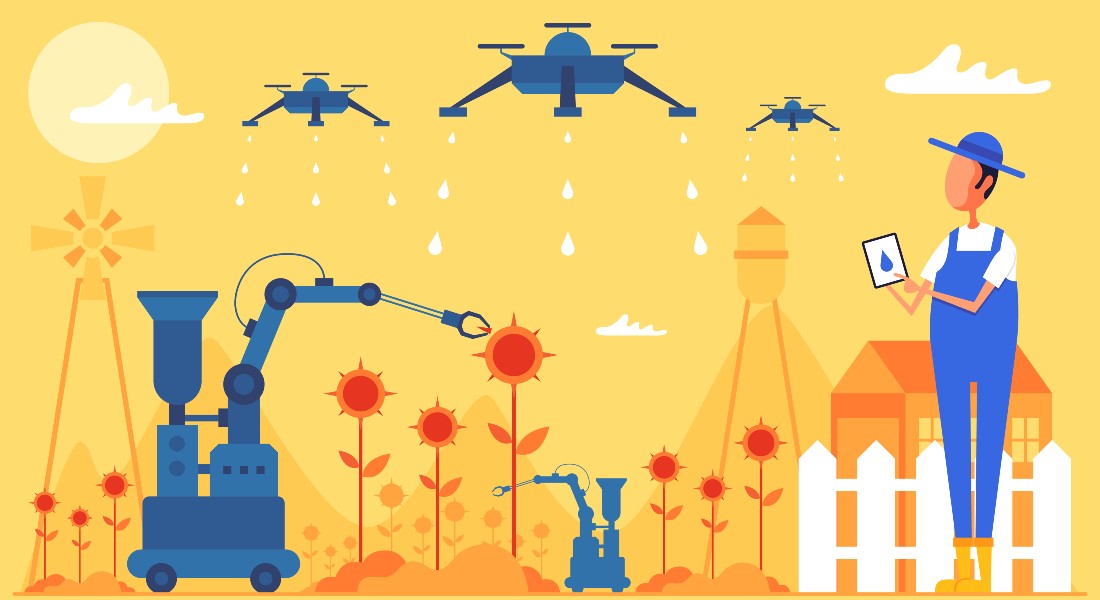Robots can improve agriculture, but old laws stand in the way
Agricultural robots have the potential to address labour shortages and increase global food security. However, outdated laws are an obstacle for these new technologies according to a new study from the University of Copenhagen, among others.

Agricultural robots are capable of working around the clock to help farmers produce food. However, laws and regulations are outdated and may, at worst, be slowing the development of new technologies, according to a new study by the University of Copenhagen’s Department of Food and Resource Economics and others.
Examples of robotic and self-driving farm machinery that mechanically remove or spray weeds and harvest crops already exist. The development of new and improved robots is in full swing worldwide, although few systems have made it onto the market.
Despite the technological advances though, the researchers behind the study assert that current safety regulations for agricultural machinery remain problematic for the wider adoption of robotics. These regulations require self-driving robots to be monitored by farmers, on site.
"As with tractors and combine harvesters, robots offer significant economies of scale. However, as the rules stand, only large farms would be able to introduce these technologies in the years to come as monitoring would be prohibitively expensive. In order for small and medium-sized farms to benefit from robots, a farmer must be able to remotely monitor several robots. This could be from their office, while tending to administrative tasks," explains Associate Professor Søren Marcus Pedersen of the Department of Food and Resource Economics, one of the study’s co-authors.
Operational safety
European safety regulations are delineated in the EU’s Machinery Directive among other places. Similar rules apply worldwide and mainly apply to the types of agricultural machinery that we are already familiar with, such as tractors and combine harvesters. These machines are unable to perform automated tasks and require a human hand behind the wheel. To develop and roll out robots, new uniform rule sets and standards are needed internationally to accommodate for new workflows with autonomous systems.
"Since robots must, in principle, be able to operate both day and night, on a minimal amount of energy, they’re often designed to be smaller and more lightweight, and thereby run slower than tractors, for example. So, if an accident does happen, they do less damage. They are equipped with sensors and cameras that detect obstacles on the roadway. These stop them before running into anything and possibly send a message to the operator should anything go wrong," Pedersen says.
According to Pedersen, this is one of the reasons why monitoring requirements could be eased when it comes to the use of agricultural robots.
Avoiding soil degradation and ensuring labor
Thanks to their light weight compared to that of a tractor, agricultural robots offer another advantage. Soil compaction occurs whenever large farm machinery moves across fields.
"It is widely recognized in agriculture that heavy machinery compacts soil and prevents, among other things, plant roots from penetrating soil, which can lower yields. Robots are far gentler on soil," explains Pedersen.” He adds:
“This will also make it possible to save fuel by avoiding plowing and performing more precise and easier workflows so as to avoid overlap in different field operations.”
According to Associate Professor Søren Marcus Pedersen of the Department of Food and Resource Economics, robots offer other distinct advantages that make it worth modernizing regulations.
"Finding enough seasonal labour for agriculture can be a major problem in many countries, where people often travel great distances to find work. Indirectly, this transport leaves a climate footprint as well. COVID 19 has made this even more apparent – and looking ahead, robots could serve as supplementary labor for farmers," he says.
He adds that robots can also free up time for individual farmers, who would typically be operating their tractor or other farm machinery. Instead, their time could be spent on administrative tasks and the purchasing and selling of goods.
Contact
Søren Marcus Pedersen
Associate Professor
Department of Food and Resource Economics
University of Copenhagen
Phone: + 45 35 33 68 82
Mail: Marcus@ifro.ku.dk
Michael Skov Jensen
Journalist
The Faculty of Science
University of Copenhagen
Mobile: + 93 56 58 97
Mail:msj@science.ku.dk
